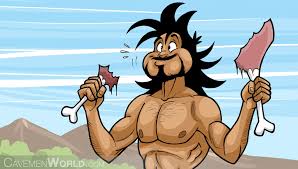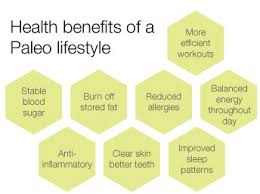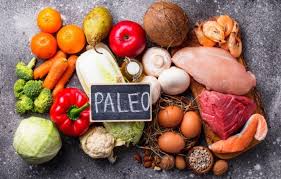The paleo diet has become a well known buzzword in health communities everywhere. So what is the paleo diet and why is it so popular?
Is the Paleo diet, an eating plan modeled on prehistoric human diets, right for modern humans?
A paleo diet is a dietary plan based on foods similar to what might have been eaten during the Paleolithic era, which dates from
A paleo diet typically includes lean meats, fish, fruits, vegetables, nuts and seeds — foods that in the past could be obtained by hunting and gathering. A paleo diet limits foods that became common when farming emerged about 10,000 years ago. These foods include dairy products, legumes and grains.
Other names for a paleo diet include Paleolithic diet, Stone Age diet, hunter-gatherer diet and caveman diet.
Purpose of the pale diet
The aim of a paleo diet is to return to a way of eating that’s more like what early humans ate. The diet’s reasoning is that the human body is genetically mismatched to the modern diet that emerged with farming practices — an idea known as the discordance hypothesis.
Farming changed what people ate and established dairy, grains and legumes as additional staples in the human diet. This relatively late and rapid change in diet, according to the hypothesis, outpaced the body’s ability to adapt. This mismatch is believed to be a contributing factor to the prevalence of obesity, diabetes and heart disease today.
Why you might follow a paleo diet
You might choose to follow a paleo diet because you:
- Want to lose weight or maintain a healthy weight
- Want help planning meals
Details of a paleo diet
- Fruits
- Vegetables
- Nuts and seeds
- Lean meats, especially grass-fed animals or wild game
- Fish, especially those rich in omega-3 fatty acids, such as salmon, mackerel and albacore tuna
- Oils from fruits and nuts, such as olive oil or walnut oil
- Grains, such as wheat, oats and barley
- Legumes, such as beans, lentils, peanuts and peas
- Dairy products
- Refined sugar
- Salt
- Potatoes
- Highly processed foods in general
A typical day’s menu
Here’s a look at what you might eat during a typical day following a paleo diet:
Breakfast: Broiled salmon and cantaloupe.
Results
A number of randomized clinical trials have compared the paleo diet to other eating plans, such as the Mediterranean Diet or the Diabetes Diet. Overall, these trials suggest that a paleo diet may provide some benefits when compared with diets of fruits, vegetables, lean meats, whole grains, legumes and low-fat dairy products. These benefits may include:
- More weight loss
- Improved glucose tolerance
- Better blood pressure control
- Lower triglycerides
- Better appetite management
However, longer trials with large groups of people randomly assigned to different diets are needed to understand the long-term, overall health benefits and possible risks of a paleo diet.
Dietary concerns

The primary difference between the paleo diet and other healthy diets is the absence of whole grains and legumes, which are considered good sources of fiber, vitamins and other nutrients. Also absent from the diet are dairy products, which are good sources of protein and calcium.
These foods not only are considered healthy but also are generally more affordable and accessible than such foods as wild game, grass-fed animals and nuts. For some people, a paleo diet may be too expensive.
Questions about the paleo diet hypothesis
Researchers have argued that the underlying hypothesis of the paleo diet may oversimplify the story of how humans adapted to changes in diet. Arguments for a more-complex understanding of the evolution of human nutritional needs include the following:
Variations in diet based on geography, climate and food availability — not only the transition to farming — also would have shaped the evolution of nutritional needs.
Archaeological research has demonstrated that early human diets may have included wild grains as much as 30,000 years ago — well before the introduction of farming.
Genetic research has shown that notable evolutionary changes continued after the Paleolithic era, including diet-related changes, such as an increase in the number of genes related to the breakdown of dietary starches.
The bottom line
A paleo diet may help you lose weight or maintain your weight. It may also have other beneficial health effects. However, there are no long-term clinical studies about the benefits and potential risks of the diet.
You might be able to achieve the same health benefits by getting enough exercise and eating a balanced, healthy diet with a lot of fruits and vegetables.
A note from Dr. K – It really is that simple!! Every diet plan or style of eating is not for every BODY, trying different things and finding what works best for YOU is key. But this Paleo Diet is a great guideline for overall healthy eating. Variety, colorful, fresh, nutrient dense, easy, and tasty…my two cents on being able to actually stick to and enjoy healthy eating!
If you want to learn more about the paleo diet, check this article out!
We also have so many awesome recipes that are Paleo based on our website! Check those out here.

